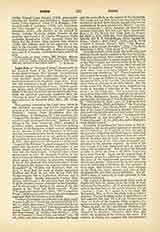

Loango, Vicariate Apostolic of (LOWER FRENCH CONGO). —Formerly included in the great Kingdom of Congo, Loango became independent towards the end of the sixteenth centur9, at which time it extended from the mouth of the Kwilou to that of the River Congo. By the treaties of 1885 all this country, over which Portugal had till then exercised a somewhat uncertain sway, became part of French Congo, except the enclave of Cabinda which still remained under Portuguese control. The transference of civil dominion affected the ecclesiastical distribution of the territory. By decree of November 24, 1886, the Vicariate Apostolic of French Congo, or Lower Congo, more properly Loango, was detached from that of Gaboon; and in 1890, as a result of further division, the Vicariate of Upper French Congo, or Ubangi, was erected. The three vicariates which make up French Congo—Gaboon, Loango, Ubangi—embrace an area, approximately, of one million square miles. The official returns (1908) for French Congo and its dependencies are given in the “Annuaire Pontifical Catholique” (1909), 342, note.
The Vicariate Apostolic of Loango lies to the south of that of Gaboon; on the west, it is bounded by the Atlantic; on the south, by the Massabi river, Cabinda, and Belgian Congo; to the east is the Vicariate of Ubangi, from which it is separated by the Djue as far as the upper reaches of that river, and thence onward by a line drawn to meet the head waters of the Alima. The natives are known by the generic appellation of Fiots, i.e. “Blacks”, and belong to the great Bantu family. Of the numerous dialects the most important is the Kivili. Amongst those who have contributed to the knowledge of the language are Msgr. Carrie, the first Apostolic vicar, and Msgr. Derouet, now in charge. The revival of missionary enterprise followed a grievous lapse on the part of the tribes from a relatively high degree of culture; fetichism, in its grossest forms, was everywhere rampant. The work of Christianization has been attended with serious difficulties, but in one year (1901) more than one thousand conversions were registered to the mission of Loango alone. The vicariate, entrusted to the Congregation of the Holy Ghost, numbers about 1,500,000 inhabitants, of whom more than 5,000 are Catholics and 3000 catechumens. There are 24 European missionaries, 1 native priest, 45 catechists, 15 brothers, and 11 sisters. Of the mission stations- 8 residental, 62 secondary—Loango at the head of the Niari-Kwilou portage route, and starting-point of the “route des caravanes” to Bra-zaville, is the most important. Its fitness for serving as chief French port and railway depot of the territory has received serious attention of late. In this place (now a mere group of factories), which is the residence of the vicar, the fathers have their own printing establishment. The seminary and house of novices are at Mayumba, where P. Ignace Stoffel founded the mission in 1888. There are established in the vicariate 6 parochial schools, with 750 boys; 6 orphanages, with 650 inmates, and 1 religious institute of men, with 6 houses.
The present vicar Apostolic is Msgr. Jean Derouet, of the Congregation of the Holy Ghost and of the Immaculate Heart of Mary, titular Bishop of Camachus. He was born at Saint-Denis-de-Villenette, Diocese of Seez, Department of Orne, France, January 31, 1866. Ordained in 1891, he went as missionary to the Congo, and in 1904 was named pro-Vicar Apostolic of Loango. He was chosen bishop on December 19, 1906; consecrated February 3, 1907, in the chapel of the Holy Ghost, at Paris; preconized on April 18 of the same year; and appointed Vicar Apostolic of Lower French Congo.
P. J. MACAULEY

